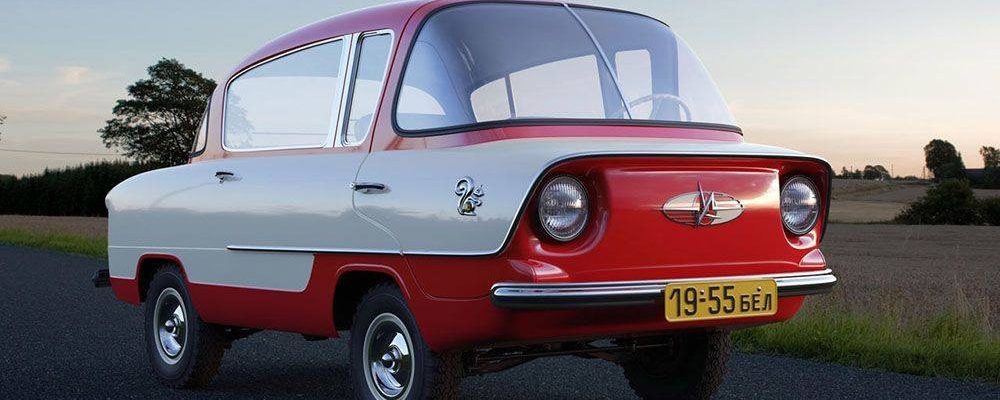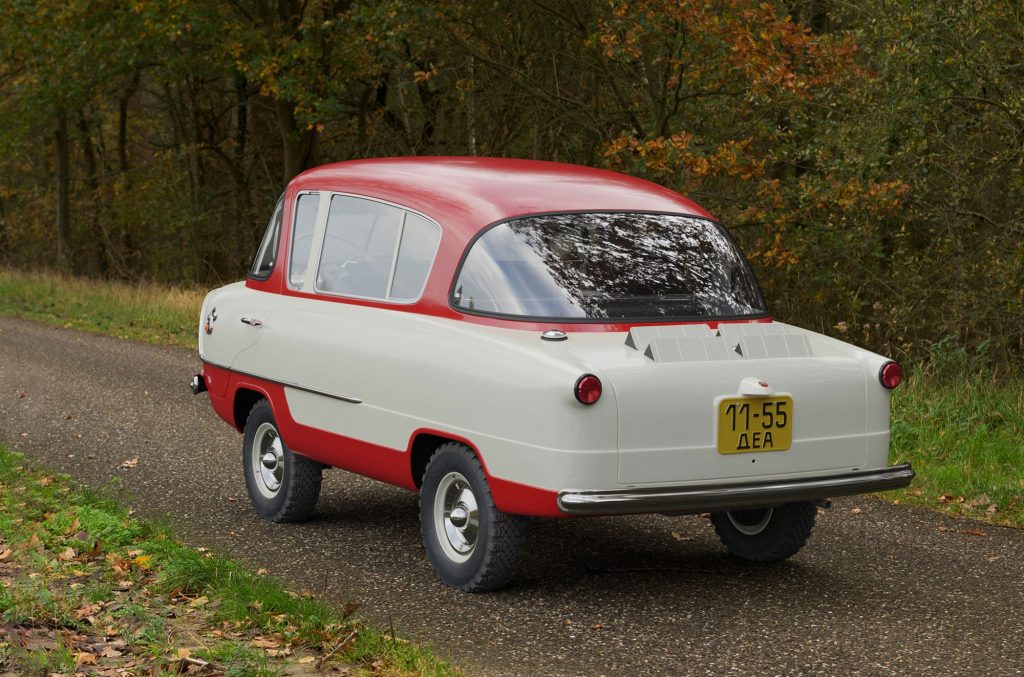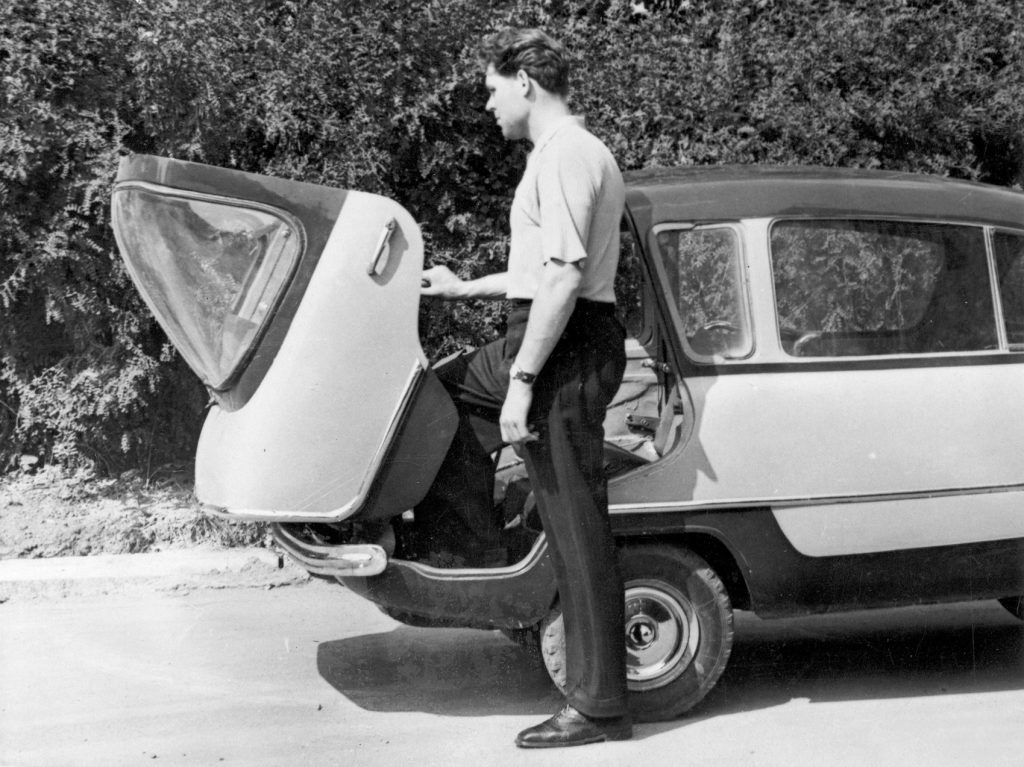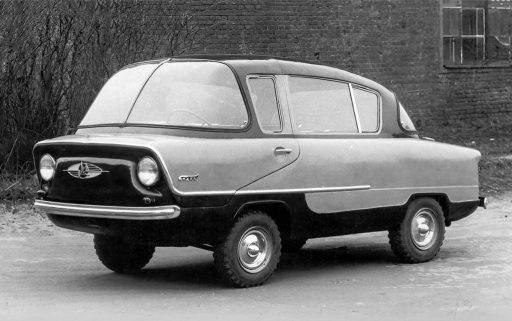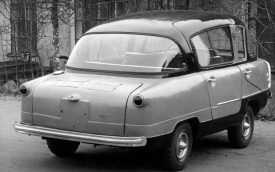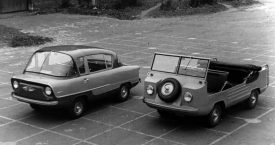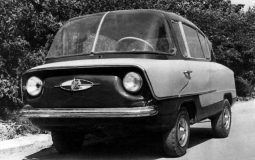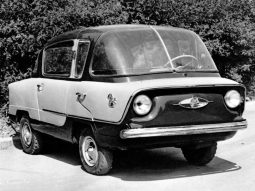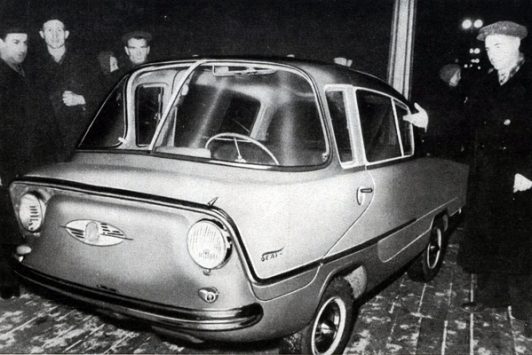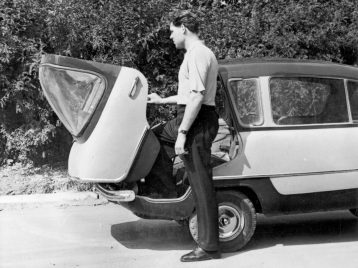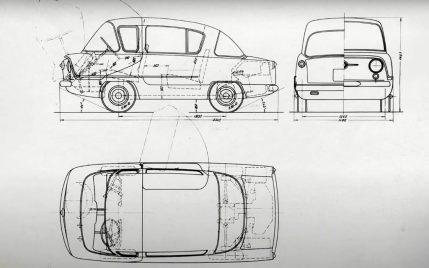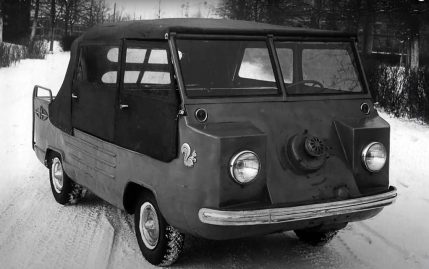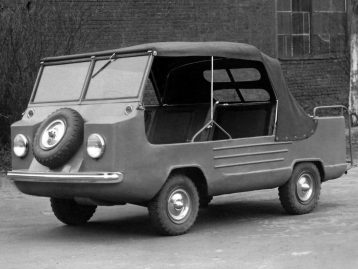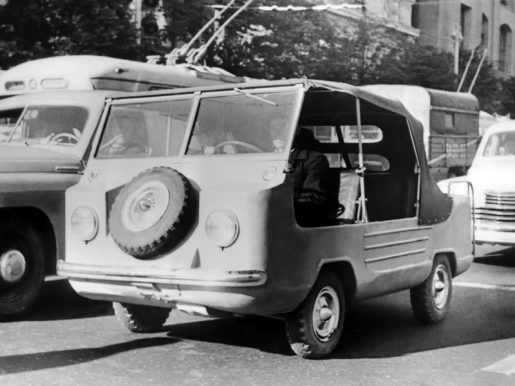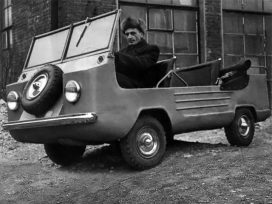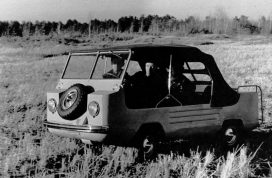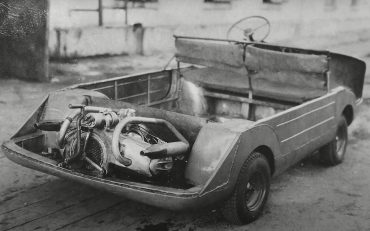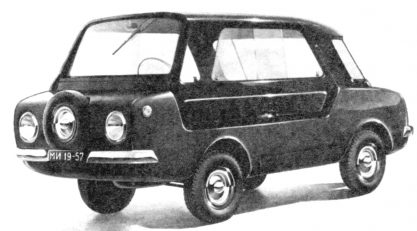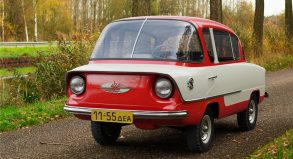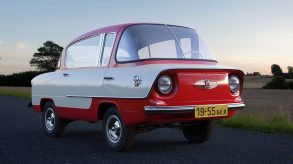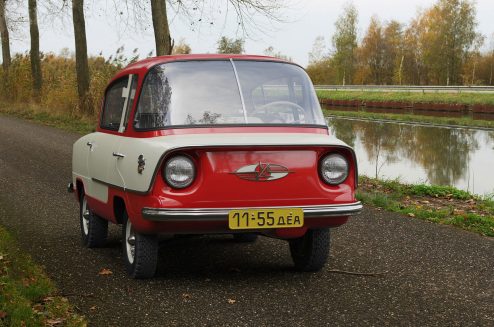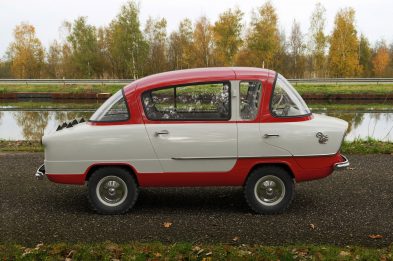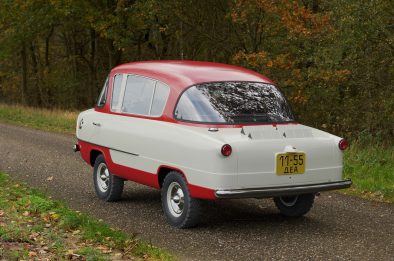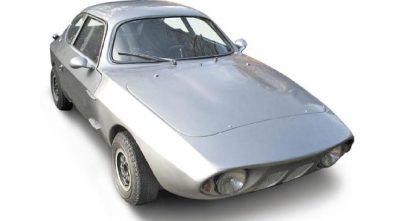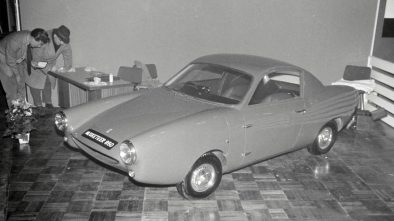IMZ-NAMI-A50 ‘Belka’
By the mid-1950s, the automotive industry in the USSR was booming. The factories started production of brand-new trucks and cars. But if the range of commercial vehicles was quite extensive, only four passenger cars were produced after the WW II: Moskvich-402, GAZ-20 Pobeda, GAZ-12 ZIM and ZIS-110. The last two the Soviet person could not afford under any circumstances.
In other words, there was an acute shortage of affordable cars in the country. Several Soviet enterprises, including the Irbit Motorcycle Plant, began to solve the long-standing problem. This is how the NAMI-A50 ‘Belka’ was born, a minicar of a very original design.
The development of the microcar began on the initiative of the chief designer of the plant. However, IMZ did not have experience in developing cars of this class, so NAMI was asked for help. As a result, the designers of NAMI joined the project.
In 1955, the first prototype was ready, which was named ‘Belka’ (later the car received the designation IMZ-NAMI-A50). It was a small rear-wheel drive car, with a short wheelbase (1570 mm), and an extremely unusual design. The car received an original wagon-type body with a sloping roof and a protruding rear part, where an IMZ-M-72 motorcycle engine with a power of 20 hp was located.
Since the motor was air-cooled, it was equipped with a fan to blow the cylinders. The engine was interlocked with a modified three-speed manual transmission from Moskvich-401. ‘Belka’ had a 4-corner independent suspension with springs and shock absorbers from the M-72 motorcycle. The brakes are also from motorcycle, but modified with a hydraulic drive. Wheels with a dimension of 5.00-10″ were taken from SMZ Soviet-built microcar.
The designers wanted to provide maximum space inside the car with saving its compact dimensions. There were two seats for the driver and passenger in the front, and a full-fledged three-seater sofa in the back. Due to the high ceiling, the interior was quite spacious, but the convenience of getting in and out of the car let us down. Only one hinged door for the rear passengers was provided on the right. To get to the front seats you might fold the front end of the body, like on the Isetta. It was folded back together with part of the roof, which clearly did not add comfort in inclement weather. In addition, the tests revealed insufficient tightness of the joint of the hinged part (door) with the body.
In 1956, the second prototype with a simplified open body was assembled. The version could be useful in the countryside, and possibly in army. The open-top prototype received a hinged windshield and an soft folded roof. The spare wheel was fitted on the front end, and comfortable handrails were placed on the hood and in the middle of the body.
After the first prototypes, two more were built and the cars were sent for testing. They revealed a number of significant shortcomings. The motorcycle engine turned out to be clearly weak for a car weighing 575-640 kg (an IMZ-M-72 motorcycle with a sidecar weighed 320 kg). In addition, the engine often worked in an unfavorable thermal regime.
There were also problems with the transmission due to the suboptimal operation of the cardan joints of the axle shafts with such small wheels. But these problems were solvable. For example, by replacing the engine with a more powerful one, developed by NAMI (this option was being worked out) and installing CV joints instead of cardan joints. So why NAMI-A50 never came out?
The fact is that the production capacity of the Irbit Motorcycle Plant was limited to 20 thousand motorcycles per year. And even if they completely curtail their production, IMZ would hardly be able to produce the same amount of microcars. A serious modernization of production lines was required, but as usual there was no money for this. In addition, the NAMI-A50 with such an uncomfortable fit was hardly suitable for the role of a mass car for the common people.
